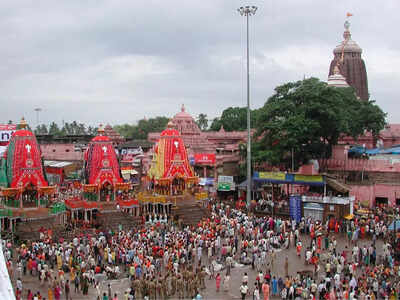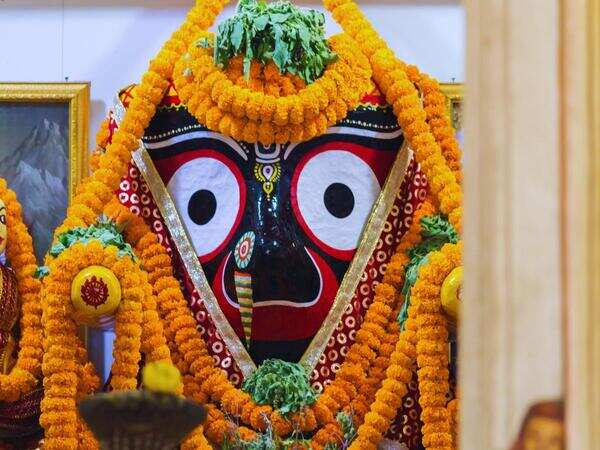ARTICLE AD BOX

The Jagannath Rath Yatra in Puri, famed as the world’s largest chariot festival, is held annually during the months of June–July. The three deities—Lord Jagannath, his brother Balabhadra, and sister Subhadra—are ceremoniously brought out of the Jagannath Temple and placed on grand wooden chariots.
Pulled by thousands of devotees, the chariots roll through the streets of Puri towards the Gundicha Temple, located about 3 km away. A week later, the return procession, called the Bahuda Yatra, marks their journey back. Preparations aren’t limited to Puri; the spiritual fervor soars across India. In Ahmedabad, Gujarat’s Minister Harsh Sanghavi said that the Rath Yatra is a “huge centre of devotion,” attracting lakhs of participants.
He confirmed that the crucial Jal Yatra ritual—fetching holy water from the Sabarmati—has commenced, and that comprehensive arrangements are underway to ensure its smooth and secure execution when it begins on June 27.
Meanwhile in Odisha, Pahandi rituals and Snana Utsav were carried out.
Here’s a quick guide to the yatra if you are planning to visit this year

Dating back to between the 12th and 16th centuries, the festival embodies rich cultural lore—some link it to Krishna’s return to his birthplace, while others credit King Indradyumna with initiating the tradition.
Each year the ritual follows ancient customs: the deities Jagannath, Balabhadra, and Subhadra are ritually bathed (108 water pots) during Snana Purnima, then secluded in Anavasara on grounds of divine “illness” before the grand procession.Read more: Wild Rajasthan: 10 unexpected wildlife sightings to watch out for
The 3 majestic chariots
Three colossal wooden chariots—Nandighosha for Jagannath (16 wheels), Taladhwaja for Balabhadra (14 wheels), and Darpadalana for Subhadra (12 wheels)—are designed anew annually in traditional patterns and hauled by devotees.
The chariots, built from specified neem-like woods and assembled with 600800+ pieces, are crowned with temple-like canopies made of over 1,200 m of cloth.A standout ritual, Chera Pahara, sees the Gajapati King sweeping the chariot grounds with a gold broom, symbolizing humility and equality before divinity.
The grand procession
Devotees throng the streets chanting “Jai Jagannath” and tugging ropes to move the chariots. It’s believed that simply touching the ropes cleanses sins and grants blessings.
The deities journey to Gundicha Temple, where they stay for nine days before returning during Bahuda Yatra. Along the return, they stop at Mausi Maa Temple to receive their favorite Poda Pitha pancakes, ending with Niladri Bijaya, which heralds the festival’s close.Read more: Puducherry to Hampi: Best slow travel destinations in South India
Planning tips for first-timers
Plan ahead – Arrive 2–3 days early to secure accommodation. Dress comfortably and stay safe – Wear modest, comfortable clothes; stay hydrated and keep belongings secure in the summer heat (25–35 °C) .Viewing options – Secure gallery viewing tickets near the temple for a calmer experience, or join the vibrant crowds on the chariot route for immersive energy.Respect local traditions – Be mindful of religious protocols and ritual timings.
Enhanced experience with tech
The Odisha government has introduced the Shree Jagannatha Dham app, a modern companion offering real-time updates on rituals, darshan queues, navigation, Mahaprasad availability, and grievance redressal—especially useful during Rath Yatra.



.png)
.png)
.png)
















 5 days ago
17
5 days ago
17









 English (US) ·
English (US) ·